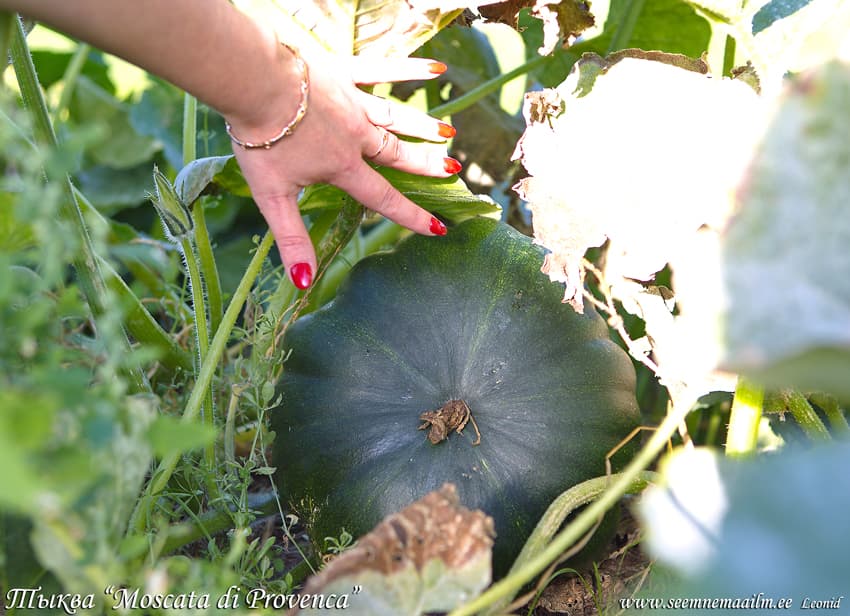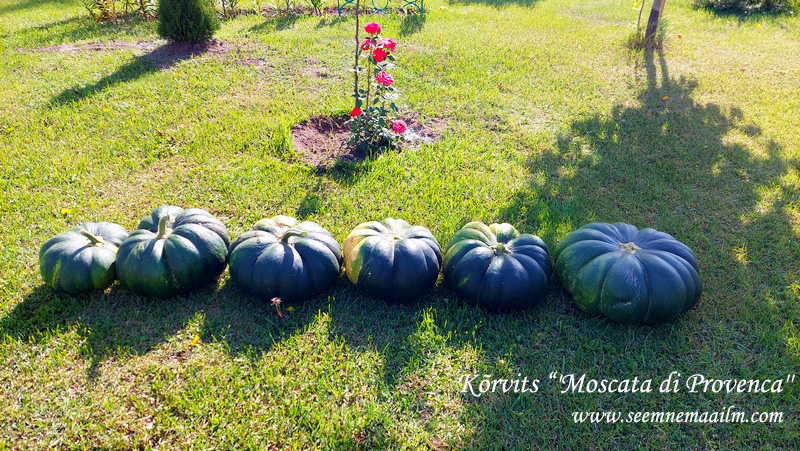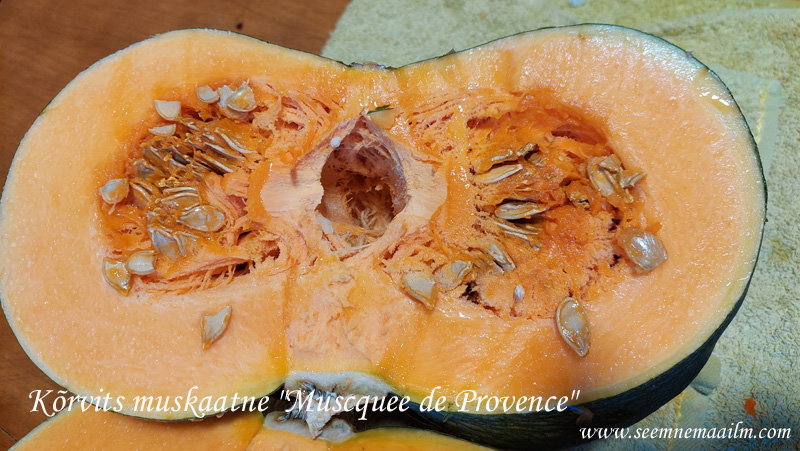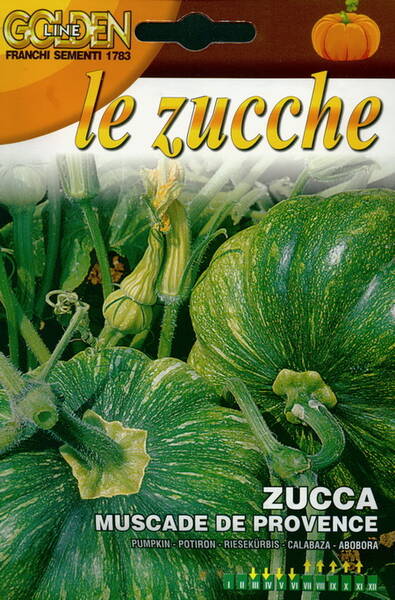Ex Tax: 2.54€
Butternut squash is the most delicious, its bark does not harden for a long time. But this pumpkin requires much more heat than other types.
* carrot-red flesh and a very small seed nest.
* the fruit can be stored for more than a year without loss of quality.
Medium late variety: ripening on the 120th day. The fruit is flattened and strongly segmented, the segments are even.
The colour of the fruit bark is orange, the bark is dense and the flesh is bright orange, dense and very aromatic. The average weight of the fetus is 5-8 kg.
Due to the high sugar content, the culinary use of this pumpkin variety is simply unlimited. Puddings, cakes, pastries, and candied fruits are made from it.
Agrotechnics.
It is grown both by seedlings and by direct sowing of seeds in the ground (when the threat of frost has passed). The seeding depth is no more than 4 cm. When using the seedling method, sowing is done in separate pots (8-10 cm in diameter), since it is better to plant plants in the ground with a clod of earth (seedlings should have 2-4 true leaves). Further care consists of loosening the soil, regular watering (during the initial growing period) and fertilizing with complex fertilizers. Pumpkin prefers loose, nutritious soil and does not tolerate shade.
1.0 g = 3-6 seeds.



Muscue pumpkin. Bot.: Cucurbita moschata Duch. ex Poir.
* Pumpkin is superior to many vegetable crops in the content of carbohydrates, pectin, vitamins and mineral salts. Pumpkin is of particular value as a dietary product. The best table pumpkins are considered to be butternut squash (Cucurbita moschata).
Butternut squash comes from the tropical coastal regions of Central America and Mexico. It is grown mainly in Central Asia.
Butternut squash includes six subspecies:
Turkmen (weakly segmented),
Japanese (deeply segmented, highly wrinkled or warty),
Mexican (woody bark, sweet mealy pulp),
Colombian (pepper-shaped fruits),
North American (fruits are small, medium, from flattened to cylindrical)
and Indian (the fruits are very large, brightly coloured, spherical and oval).
One of the species characteristics of nutmeg pumpkins is the presence of aerenchyma - white or silvery spots on the surface of the leaf. Aerenchyma reflects part of the sun's rays, which helps reduce water consumption.
Varieties of butternut squash are rich in carotene (up to 26 mg per 100 g of wet weight). All of them are late ripening. Medium- and long-climbing (canes up to 4–6 m) varieties are known. The widespread distribution of nutmeg pumpkins in our country is hampered by its heat-loving nature.
However, this pumpkin ripens well even in Estonian conditions when grown through seedlings (sowing seeds in pots for seedlings on April 20–25, planting in open ground after spring frosts on June 4–6, by this time the plants have 2–3 true leaves).
Pumpkin must be harvested before the first frost. Butternut squashes store well and can be stored until June in some cases.
The edibility of the seeds has been questioned. Unlike other species, the seeds are very small and have a hard and hard shell. In addition, the fruit contains, as a rule, little of them. They are located in the lower part of the fruit, the rest is solid pulp.
The fruits of butternut squash are predominantly cylindrical in shape; there are also varieties with a fruit shape ranging from flattened to pitcher-shaped, with a smooth, segmented and tuberculate surface. The colour of the fruit bark is most often green with intermittent stripes until autumn, less often light beige. When ripe, the background lightens and becomes reddish-yellow or cream, and the reticulate pattern takes on a dull orange colour. Immediately after harvesting, the pulp of the fruit has a pale colour (beige or light orange) with a slight nutmeg aroma; the pulp has a bland taste. During storage, the pulp acquires an orange tint, while the nutmeg aroma intensifies, and the sugar content also increases. When grown in Estonian conditions, maturity occurs no less than 2 months after harvesting.











